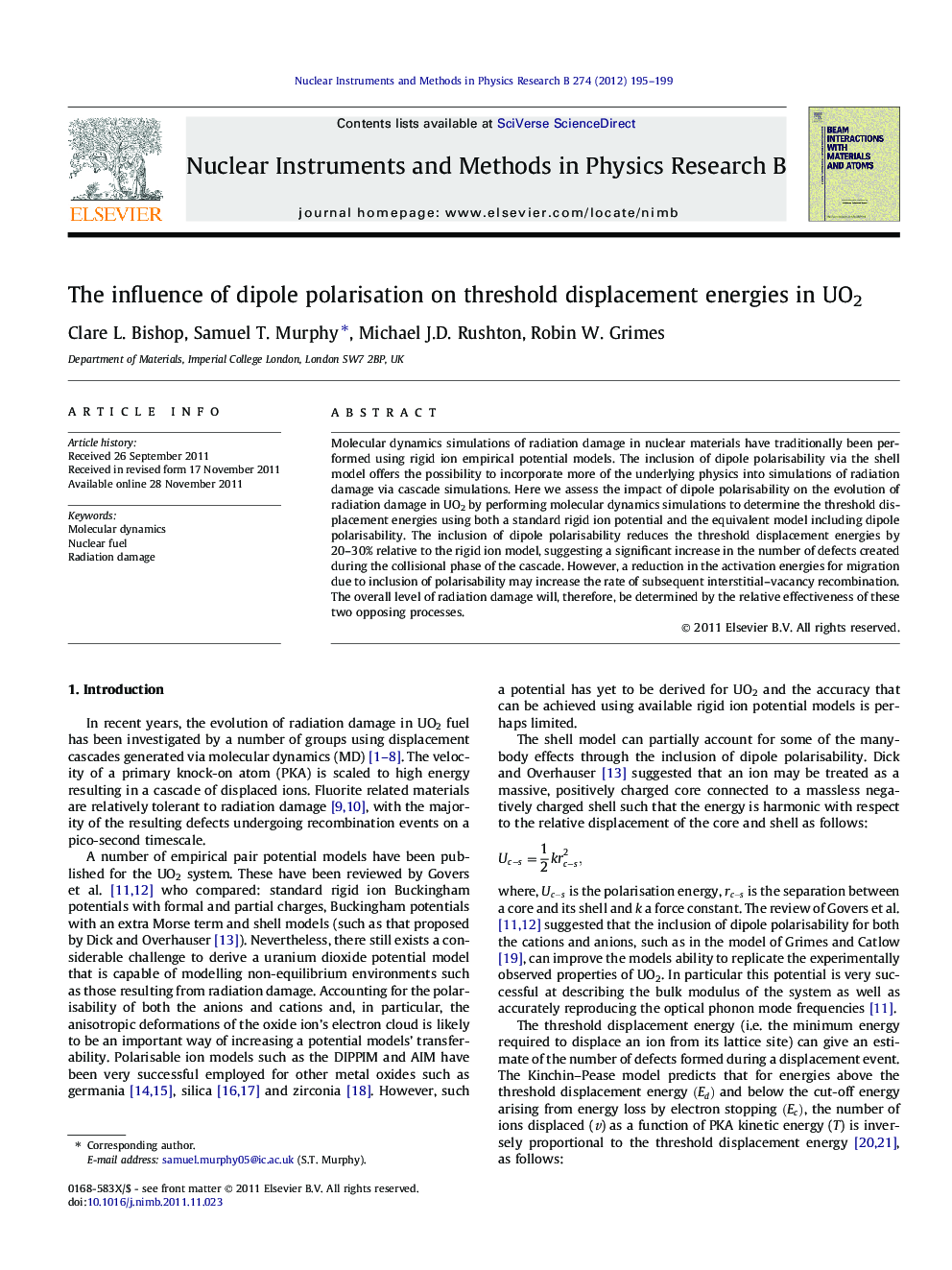| کد مقاله | کد نشریه | سال انتشار | مقاله انگلیسی | نسخه تمام متن |
|---|---|---|---|---|
| 1682839 | 1518743 | 2012 | 5 صفحه PDF | دانلود رایگان |

Molecular dynamics simulations of radiation damage in nuclear materials have traditionally been performed using rigid ion empirical potential models. The inclusion of dipole polarisability via the shell model offers the possibility to incorporate more of the underlying physics into simulations of radiation damage via cascade simulations. Here we assess the impact of dipole polarisability on the evolution of radiation damage in UO2 by performing molecular dynamics simulations to determine the threshold displacement energies using both a standard rigid ion potential and the equivalent model including dipole polarisability. The inclusion of dipole polarisability reduces the threshold displacement energies by 20–30% relative to the rigid ion model, suggesting a significant increase in the number of defects created during the collisional phase of the cascade. However, a reduction in the activation energies for migration due to inclusion of polarisability may increase the rate of subsequent interstitial–vacancy recombination. The overall level of radiation damage will, therefore, be determined by the relative effectiveness of these two opposing processes.
Journal: Nuclear Instruments and Methods in Physics Research Section B: Beam Interactions with Materials and Atoms - Volume 274, 1 March 2012, Pages 195–199